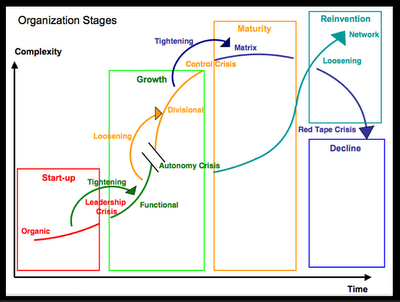Reports from the Knowledge Labs about our recent findings, research topics, and interviews with lifestyle leaders who are creating their own futures.
|
|
| |
How to stimulate your own powers of foresight. Consider the following thought provokers. Ask yourself, in these categories what are the brand new trends and forces? Which are the ones growing in importance? Which current forces are loosing their steam? Which have peaked or are reversing themselves? Which are the "wildcards" about to disrupt us in the future? POLITICAL AND TECHNICAL thought for food: Electronics, Materials, Energy, Fossil, Nuclear, Alternative, Other, Manufacturing (techniques), Agriculture, Machinery and Equipment, Distribution, Transportation (Urban, Mass, Personal, Surface, Sea, Subsurface, Space), Communication (Printed, Spoken, Interactive, Media), Computers (Information, Knowledge, Storage & Retrieval, Design, Network Resources), Post-Cold War, Third World, Conflict (Local, Regional, Global), Arms Limitation, Undeclared Wars, Terrorism, Nuclear Proliferation, Weapons of Mass Destruction, Governments (More/Less Power and Larger or Smaller Scale), Taxes, Isms: Nationalism, Regionalism, Protectionism, Populism, Cartels, Multinational Corporations, Balance of Trade, Third Party Payments, Regulations (OSHA, etc.) Environmental Impact, U.S. Prestige Abroad. SOCIAL AND ECONOMIC Food for thought:
Labor Movements, Unemployment / Employment Cycles, Recession, Employment Patterns, Work Hours / Schedules, Fringe Benefits, Management Approaches, Accounting Policies, Productivity, Energy Costs, Balance of Payments, Inflation, Taxes, Rates of Real Growth, Distribution of Wealth, Capital Availability and Costs, Reliability of Forecasts, Raw Materials, Availability and Costs, Global versus National Economy, Market versus Planned Economies, Generations: Y, X, Boomers, Elderly, Urban vs. Rural Lifestyles, Affluent vs. Poor, Neighborhoods and Communities, Planned or Organic Growth.
Got Knowledge?
|
|
| |
|
|
|
|
The Journal of 2020 Foresight
|
|
| |
|
Tuesday, August 29, 2006

Every Organization Has a Stage, Pick the Right Cast for the Next Act
Chapter Four: The Tribal Territories
By Steve Howard, CKO
The Knowledge Labs
Table of Contents
Chapter One: Basecamp
Chapter Two: The Ridge
Chapter Three: The Outpost
Chapter Four: The Tribal Territories
"Something else is absolutely going to have to be sorted out in a flat world: Who owns what? How do we build legal barriers to protect an innovator's intellectual property so he or she can reap its financial benefits and plow those profits into a new invention? And from the other side, how do we keep walls low enough so that we encourage the sharing of intellectual property, which is required more and more to do cutting-edge innovation?"
Thomas Friedman, “The World is Flat“
DOUBLE NICKEL RANCH. Armed with the knowledge that whatever has worked in the previous phase of an organization’s growth is exactly 180 degrees opposite of what is required for success in the next phase, you can sell your value proposition confidently.
Journal of 2020 Foresight: If we revisit the bell-shaped curve again for a moment, is there some sort of short-hand way of sizing up needs of a potential employer, client or customer from a distance – some sort of educated guess?
Explorer: You bet there is cyclical expansion or contraction periods. Moving back and forth between loosening and tightening of controls and between divergent and convergent management practices.
J2020F: Tied to economic cycles? They can come and go regardless of what state an organization is currently in, right?
Explorer: Sure. We see cyclical swings back and forth between diversification and consolidation.
J2020F: I'm guessing as the economic cycle contracts the organization consolidates its product offerings, while they diversify their product line when it expands.
Explorer: That's true. Each of the typical turning points between innovation and efficiency, or between expansion and contraction corresponds to a loosening divergent or a tightening convergent organization strategy.
J2020F: Divergent in what way?
Explorer: Usually away from a structured, centralized, or coordinated organization structure and decision-making approach.
J2020F: To what?
Explorer: Towards a more unstructured, decentralized hierarchy designed to deal with the competitive environment changes and increased complexity. This is the innovation-driven, adaptive period.
J2020F: And the opposite?
Explorer: The reverse begins with a convergence away from an autonomous organization and decision-making process and moves to a more coordinated, centralized structure -- designed to economize on scarce resources.
J2020F: This same kind of divergence to convergence and visa versa occurs even independent of economic or market conditions, right?
Explorer: Let's recap. The start-up phase favored by Agents is an organic, creative and collaborative phase that ends in a crisis of leadership.
J2020F: The ticket to the next stage is management -- a tightening or convergent approach -- just the opposite of the first and favored by a combination of Agents and Athletes.
Explorer: But when a functional organization reaches its end state it is a crisis or autonomy that requires a loosening approach found in divisional structures, favored by Athletes and Associates.
J2020F: When the strength of the divisional organization over extends it reaches a limit and a crisis of control requiring a tightening approach ends in a matrix -- structure favored by Associates and Academics.
Explorer: But that runs its course in a red tape crisis requiring a loosening network organizational structure, favored by unique combinations of Academics and Agents.
J2020F: And by learning lessons from the core competencies assembled from Agents, Athletes, Associates and Academics to pull off a reinvention strategy organization masters the timing of shifting from loosening or divergent approaches to convergent or tightening approaches to divergent and loosening again with less resistance.
Explorer: The most difficult lesson is to begin the reinvention efforts during a time when major growth dominates the collective mindshare and budgeted resources among Athletes and Associates but before Agents are about to depart to prevent major shock to the organization’s system further down the path.
J2020F: But, let's say I'm the Chief Reinvention Officer for my organization, on this flat earth with relentless commodization, how do I pull a rabbit out of the hat?
Got Knowledge?
Copyright ©2002 - 2006 Aarnaes Howard Associates. All rights reserved worldwide.
6:35 AM
|
|
| |
|
|
|